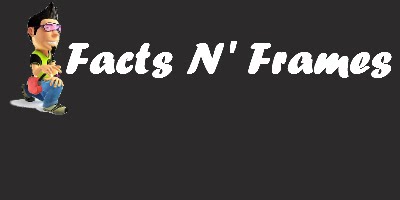Film is a media where the visual and (sometimes) the speech
merge together. The visual mode easily impacts our minds so much that, despite
some famous lines from movies, what we remember most are snippets of moving or
still images.
Arrival, a movie starring Amy Adams, highlights this
very conflict between language and image. Soon after its release the film
created enormous buzz by gathering critical appreciation from different source,
and through the debate over ‘accidental’ nomination of Amy Adams for the Oscars.
While such nittigritties are perfect for
the gossip page, let’s talk about the film for a moment.
To summarize very briefly, Arrival is about the
arrival of alien spaceships in different cities on the earth and a linguist’s,
played by Amy Adams, job to communicate with them.
At first we may wonder what is a linguist doing in an alien mission.
Well, her task is to decipher their language and understand their purpose of
being on earth. The root of the problem therefore lies in inability to
communicate with this unknown species. In this way, the film highlights human
beings’ extreme reliance on spoken language as the only mode of communication.
When the other species fail to do so, it causes mistrust and fear among the
humans on the earth about possible impending destruction. Hence, the ‘human’ army
leaders’ decision to attack the alien spaceship arises out of the fear of
unknown.
The aliens, with their bodies hidden behind the smoke and shielded by glass, are a mystery to the humans. They do not resemble anything that humans have seen before. By showing how human written and spoken language is illegible to the aliens, the film breaks the superiority that language assumes. It also shows that, like their language, human beings are merely another species existing in this universe. The aliens not only have a ‘better’ method of communication (one that is not bound by written scripts and does not require any sound), they are also a better race than humans having the ability to see future.
The aliens, with their bodies hidden behind the smoke and shielded by glass, are a mystery to the humans. They do not resemble anything that humans have seen before. By showing how human written and spoken language is illegible to the aliens, the film breaks the superiority that language assumes. It also shows that, like their language, human beings are merely another species existing in this universe. The aliens not only have a ‘better’ method of communication (one that is not bound by written scripts and does not require any sound), they are also a better race than humans having the ability to see future.
The film also breaks the conception of linearity. By moving
back and forth through present and future, we are hardly ever sure about what
is happening and what is yet to happen. Especially intriguing is the scene
where Ian (played by Jeremy Renner) confesses his love for Louise (played by
Amy Adams), and Louise can already foresee their future—marriage, child birth,
and divorce—in front of her eyes. This creates confusion as to whether she was
simply narrating this incident or living in it – because the first scene shows
her interaction with her daughter. If she is living in the present, she is yet
to have a daughter. Thus, like the split created by alien spacecraft into the
earth’s atmosphere, the film subverts norms and assumptions at multiple levels.
The film shows how there is a continuous tendency of humans
to ‘translate’ the unknown into the known. This attempt is showcased by Ian who
names the aliens after Abbott and Costello, two famous ‘human’ comedians,
thereby trying to humanize the aliens. It also shows an effort to reduce the
aliens into mere comedic creatures unworthy of human attention. In the end,
however, the questions remain: is Amy’s interpretation of the symbols correct?
Doesn’t she ultimately impose her language and meanings onto their signs?



















